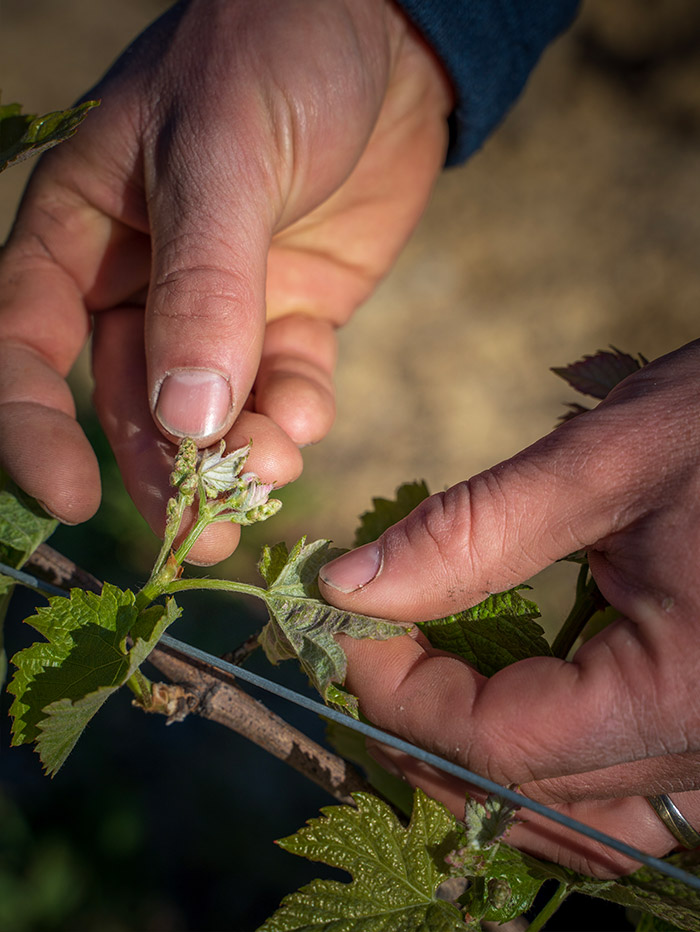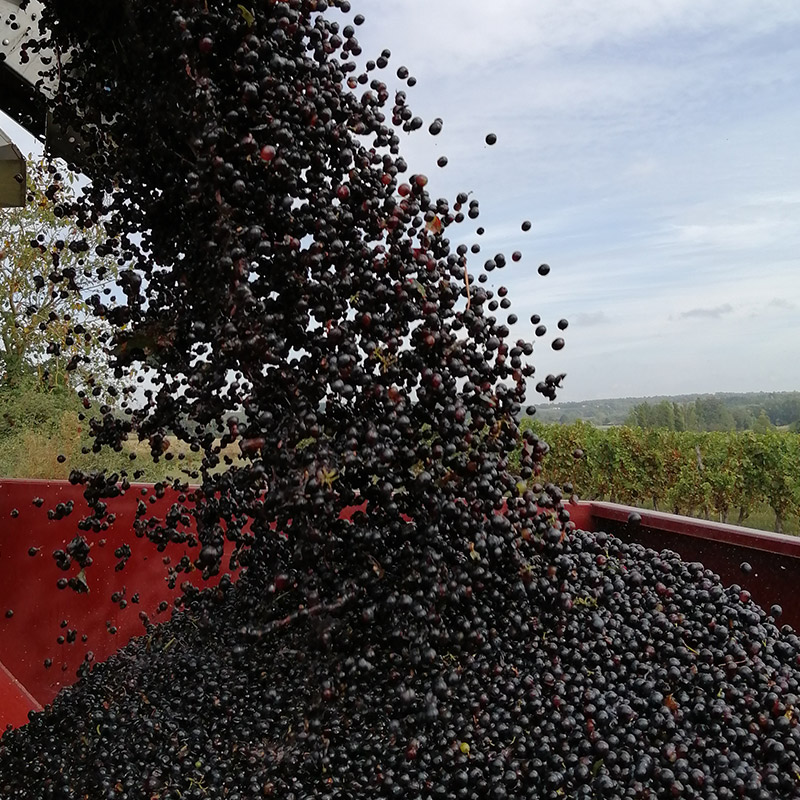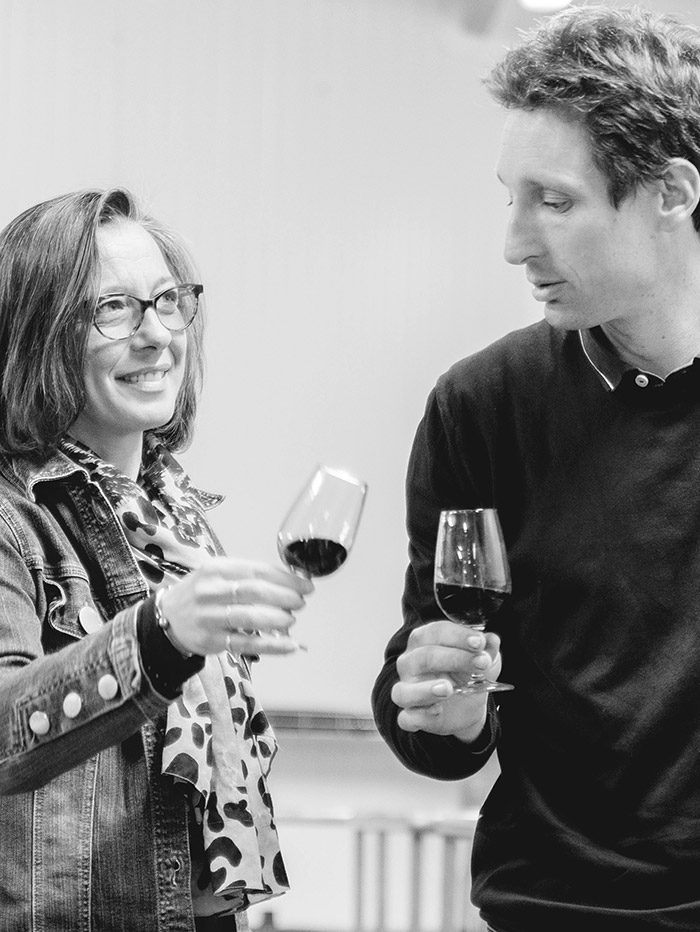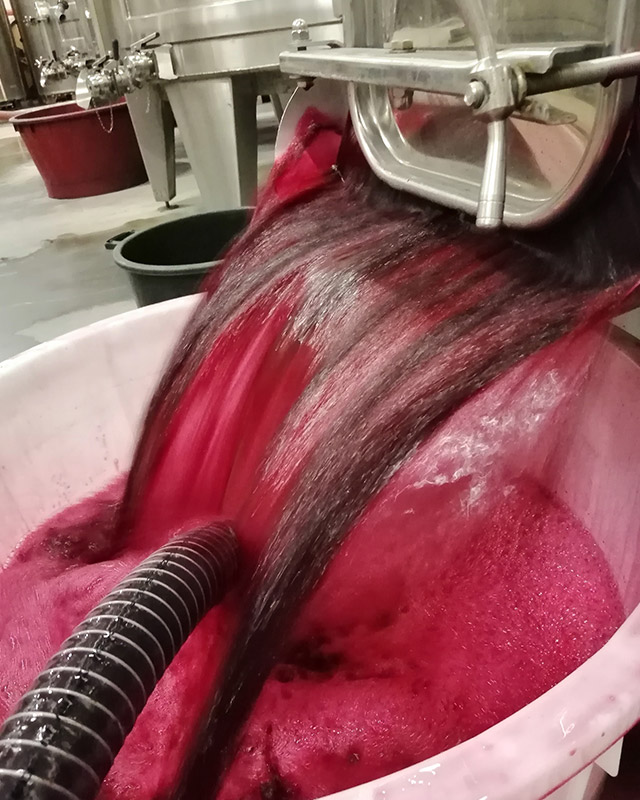
KNOW-HOW

Viticulture :
Respect for nature and the environment
The goal is to produce healthier and quality wines.
In practice, everything is measured and calculated to avoid as many inputs as possible in our field: we only treat if necessary and at reduced doses with a privileged use of “bio-control” products that are less aggressive for humans and plants. . Everything is measured and calculated to avoid a maximum of discharges from our domain with recovery and filtration of all our contaminated water. The soiled packaging is sorted and recovered by specialized companies.
Work in the vineyard
All seasonal work (except trimming) on the vines are by hand: pruning, folding, removing bad-vine, trellising.
All the work on the vineyard is mechanical. We work every other row with alternating rows every year.
Wine-harvest
From September, samples of the ripeness of the grapes are taken and analyzed in the laboratory.
At the same time, the tasting, directly on the plot, of the grape berries allows the results obtained by the laboratory to be interpreted tastefully.
Laboratory maturity (wine chemistry) is often obtained before taste maturity.
It is only once the taste (aromatic) maturity has been reached that the harvest is carried out.
The harvest is mechanical, very early in the morning to keep the temperatures cool.
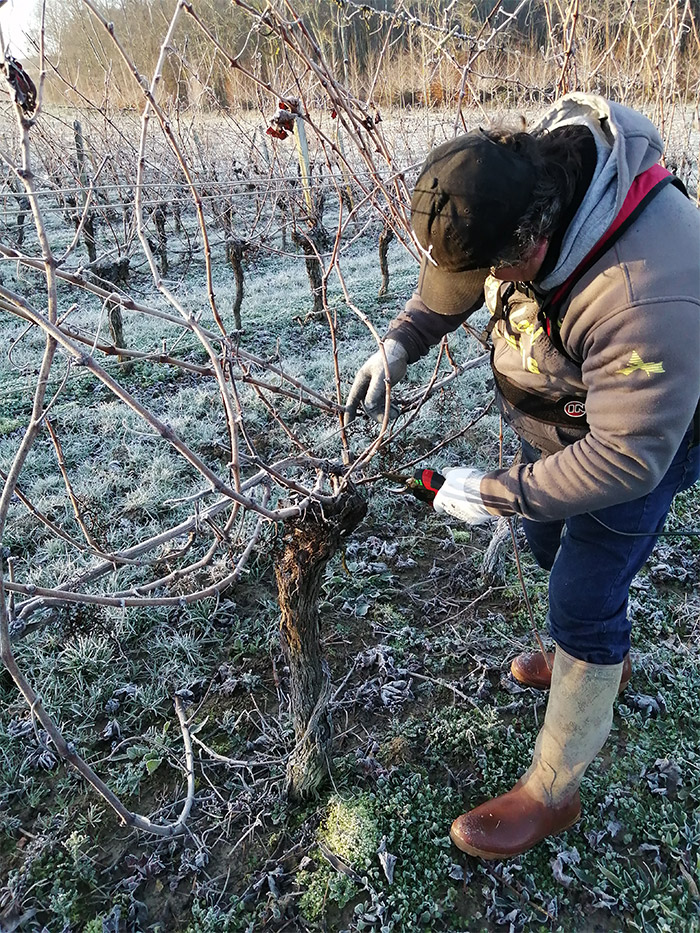

A FAMILY KNOW-HOW
A traditional winemaking process

Vinification :
WORK IN THE CELLAR
THE VINIFICATION DIFFERS ACCORDING TO THE DIFFERENT APPELLATIONS:
For the Bordeaux Supérieur the grapes are kept in stainless steel tank for a pre-fermentation maceration of 10 days, followed by the alcoholic and malolactic fermentation. The wine is aged in barrels to guarantee the woody side of the wine.
For the Bordeaux red wine the grapes are kept in stainless steel tank for an 8-day skin maceration, followed by the alcoholic and malolactic fermentation. It is filtered a first time and aged in stainless steel tanks.
For the Bordeaux Rosé the grapes are kept in stainless steel tank for a cold stabulation of 8 days for the Cabernet Sauvignon and 20 days for the Merlot. The alcoholic fermentation is done on unblended grape varieties. The ageing is also done on fine lees but for a period of 1 month.
For the Entre-Deux-Mers, the grapes are kept for a skin maceration for 18 to 24 hours, then pressed, settled and cold stabilized for 15 to 20 days, followed by fermentation on unassembled grape varieties. The aging takes place on fine lees for several months.
Following these processes, a filtration is done with fining agent before the bottling which is done on the estate.
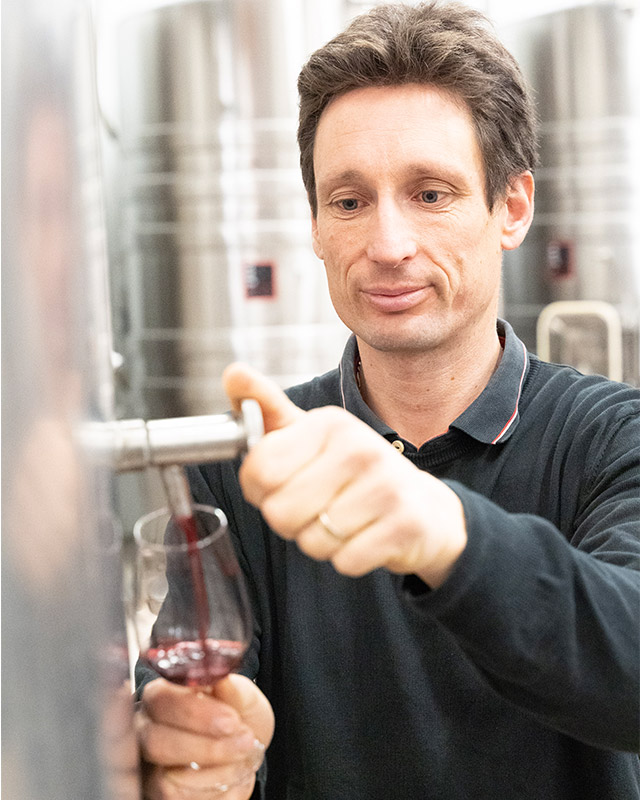

News
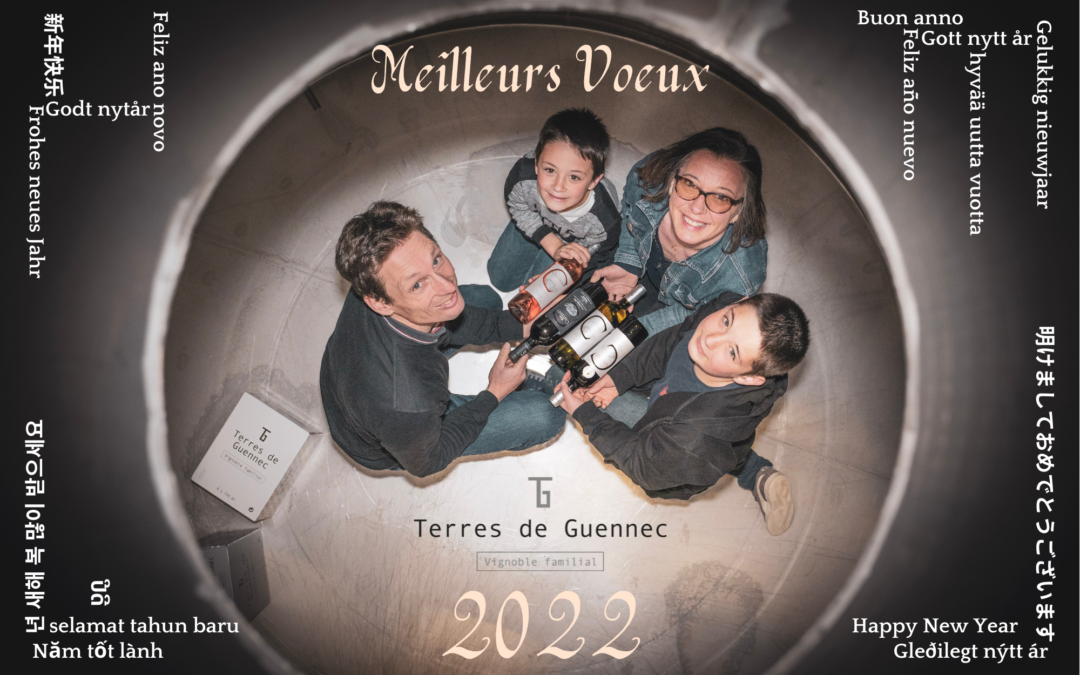
Happy New Year 2022
We wish you a very happy new year 2022

Bordeaux Undiscovered 2021
Video presentation of the "Terre de Guennec" estate and the complete range of Château Castenet on the occasion of the Bordeaux Undiscovered 2021 event, we have produced a video presenting the estate as well as the full range of Château Castenet wines
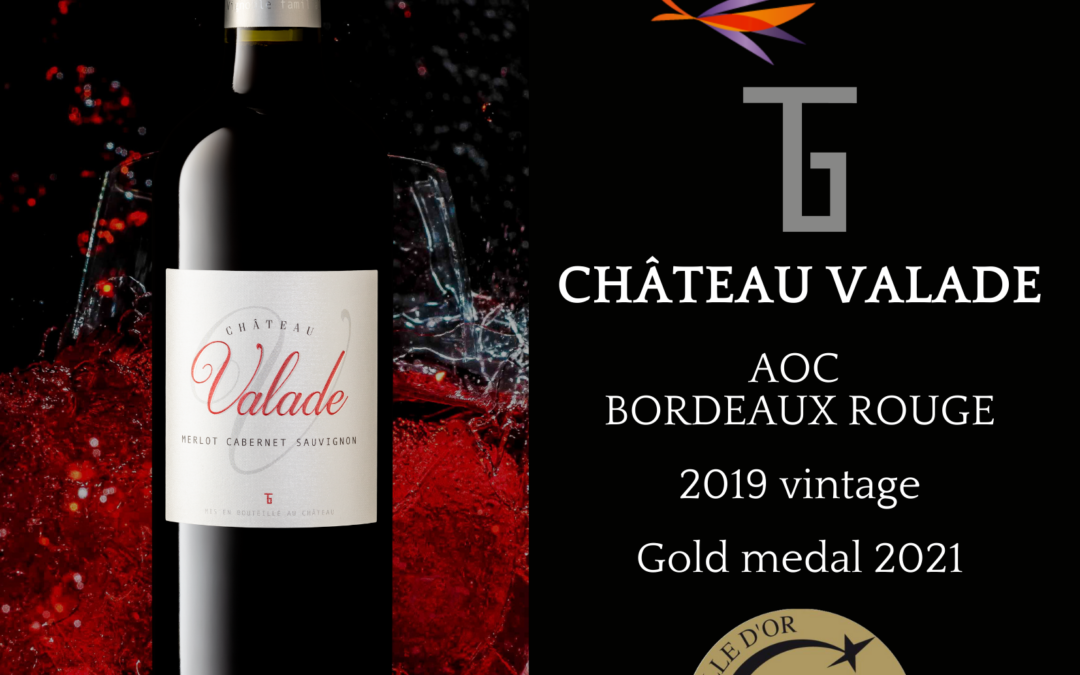
Bordeaux Wine Awards
Medal-winning WinesChâteau Castenet, AOC Bordeaux Rouge 2019 available for direct sale and on order at the end of the year. Château Valade, AOC Bordeaux Rouge 2019 available within a few months and only for export. Château Valade, AOC Entre-Deux-Mers 2020 available...
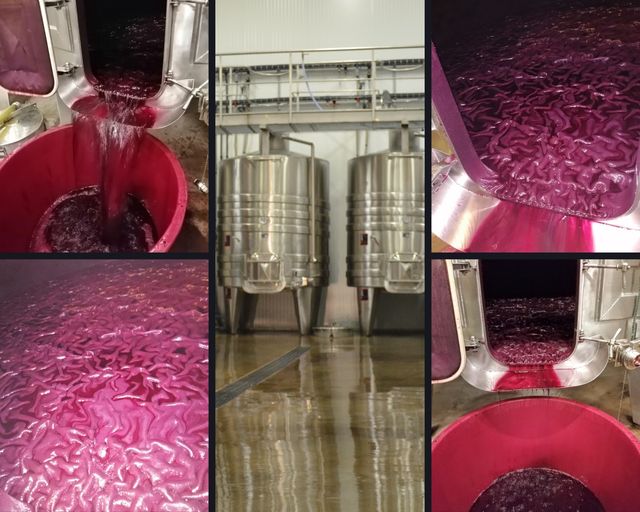
Vintage 2020
New Vintage We present to you, the red waves of the Merlot lees from our 2020 vintage.It is a natural deposit which is created at the bottom of the tank and which is more important in cold weather. To remove this deposit, we carry out a racking in order to recover the...
loggin
my account
100% Secured Payment
Contact
visit us
visits and tastings by appointment
3 Castenet • 33790 AURIOLLES
+33 (0)5 56 61 40 67
terresdeguennec@terresdeguennec.fr

